For a long time, databases have been the go-to avenue for companies to store and access data. However, with the rise of big data, businesses of all sizes are rapidly adopting cloud data lakes as a cheaper yet highly scalable alternative storage solution. This adoption entails transitioning from on-premises infrastructure to the cloud, for example, migrating from Oracle to Azure Data Lake.
Talking about Azure, it’s no secret how many similar products and services Microsoft has under its Azure umbrella, and it’s only natural to confuse one with another—something for marketers to take home and think about.
In this blog, we’ll talk you through the process of migrating data from Oracle to Azure Data Lake (Gen 2) using Astera Centerprise. Before we get to it, let’s quickly go through Oracle and Azure Data Lake first.
What is Oracle Database?
Developed and marketed by Oracle, Oracle database is a relational database management system used by global enterprises to store, access, and manage company-wide data. Currently, it’s the most widely used RDBMS with around 30% market share—the highest in the segment. Oracle continues to be a leader in this space due to its:
- Compatibility with multiple apps and platforms
- Ability to scale better than other RDBMS
- Robust security and privacy
Microsoft’s SQL Server happens to be its closest rival in the enterprise market. Interestingly, though, they both have similar structures and use SQL for querying, albeit with minor differences in variables, syntax, and built-in functions.
What is Azure Data Lake?
Azure Data Lake is one of Microsoft’s several services, including Azure Data Factory, Azure Synapse, Azure Data Explorer, etc., hosted in its public cloud, Azure.
Azure Data Lake is designed primarily to support big data analytics workloads. It:
- Offers virtually limitless scalability
- Handles petabytes of data effortlessly
- Processes and analyzes data across platforms and languages
- Provides support for enterprise-grade security and privacy
Microsoft stepped up its game in the data lake segment by releasing a refined, more robust iteration, Azure Data Lake Gen 2. It combines ADLS Gen 1 and Azure Blob Storage, which means you get the best of both worlds: sophisticated security and low-cost scalability.
Why Migrate from Oracle to Azure Data Lake?
It’s estimated that the global data lakes market will be worth around USD 18 billion by 2026. There’s a good reason why organizations are rapidly adopting data lakes.
Oracle DB, or any other on-premises database, cannot cope with the staggering influx of data from disparate sources.
First, they’ll quickly run out of storage, and second, they’ll find that it’s no longer viable to continue to invest in on-premises infrastructure.
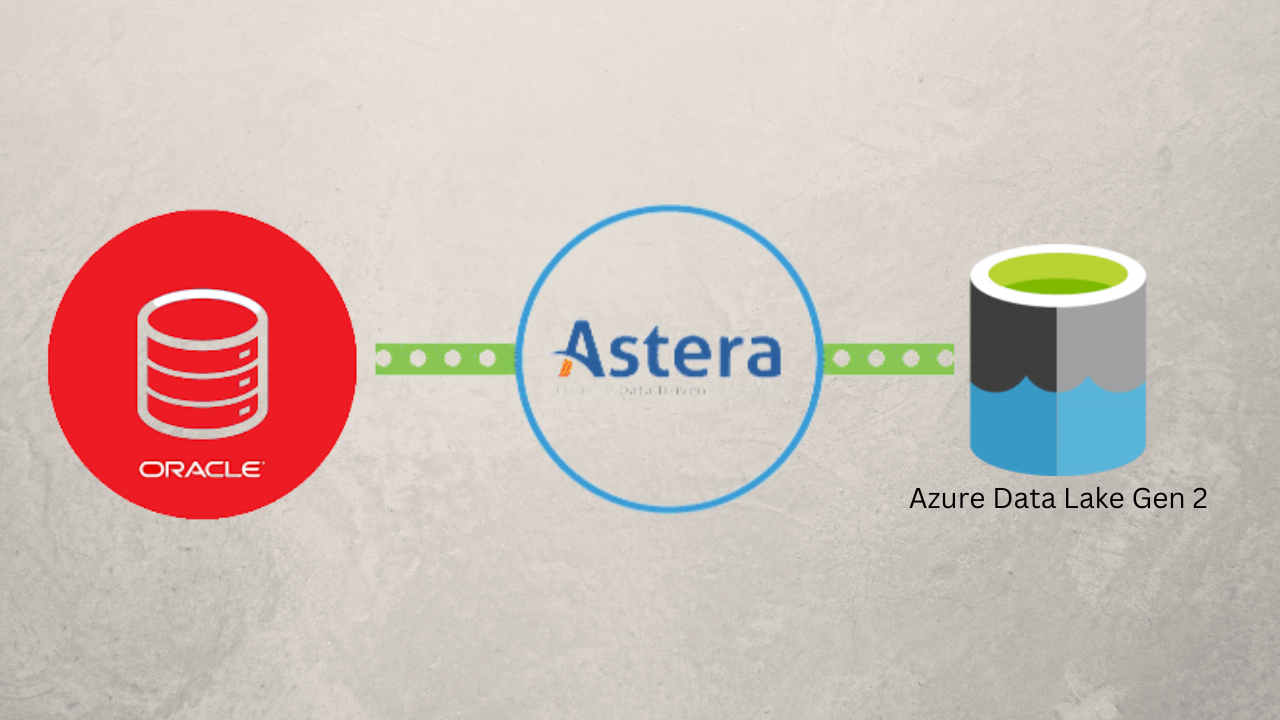
Move data from Oracle to Azure Data Lake using Astera Centerprise
While the ever-increasing volume of data is the primary driver of migrating from an on-premises database to the cloud, other related factors .
Support for big data
On-prem databases, including Oracle, are not designed to handle big data. Big data comes in all shapes and sizes, and a relational DBMS like Oracle cannot ingest semi-structured data, let alone unstructured, raw data.
Conversely, cloud data lakes like Azure Data Lake are purpose-built to handle big data. So, whether you want to analyze just a portion of your data or get a holistic view of your entire data, you don’t have to worry about delays, bottlenecks, or performance issues.
Embrace semi and unstructured data
Unlike relational databases or data warehouses, cloud data lakes are not restricted by a rigid schema. Instead, they can handle and store data of any type, in its native form, without requiring transformations.
So, whether your data is structured, semi-structured, or completely unstructured, there is a 100% chance a data lake will be indifferent.
Cost-effective scalability
As far as on-premises databases are concerned, you can either add more computing and storage resources to existing machines to scale them vertically or add more servers and distribute data and processing across them to scale horizontally.
You may consider scaling horizontally if your requirements entail minimal downtime and maximum performance. However, it also comes at a higher cost.
Fortunately, that’s not the case with Azure Data Lake, as you can leverage virtually uncapped scalability without incurring high costs.
Now, let’s move to the most exciting part: moving from Oracle to Azure Data Lake.
Migrate from Oracle to Azure Data Lake using Astera Centerprise
Astera Centerprise is a powerful data integration platform that allows you to combine data from disparate sources and load it into your desired destination, whether on-premises or in the cloud, without writing code.
Our no-code solution supports various sources, including web apps, file systems, big data file formats, databases, etc.
Migrating your data from Oracle to Azure Data Lake using Astera Centerprise is just a matter of drag-and-drop and point-and-click with its intuitive, no-code UI.
To copy data from Oracle to Azure Data Lake, simply:
- Drag and drop Astera’s database connector and configure it to connect to your Oracle source database.
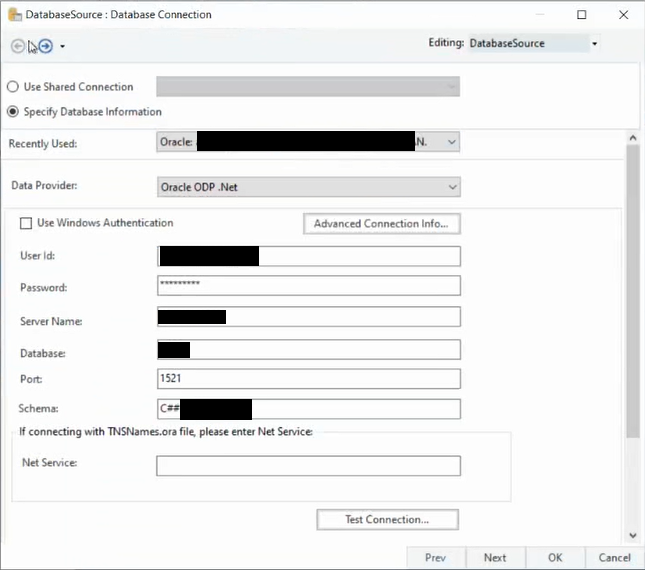
Setting up the Oracle database connector
- Specify the table you want to read data from. Here you can also choose whether you want to do a full or an incremental load.
- Next, you’ll see the Layout Builder, where you can view information like data type and make changes to column names, remove fields for which you don’t want to transfer data to Azure Data Lake, etc., if necessary.
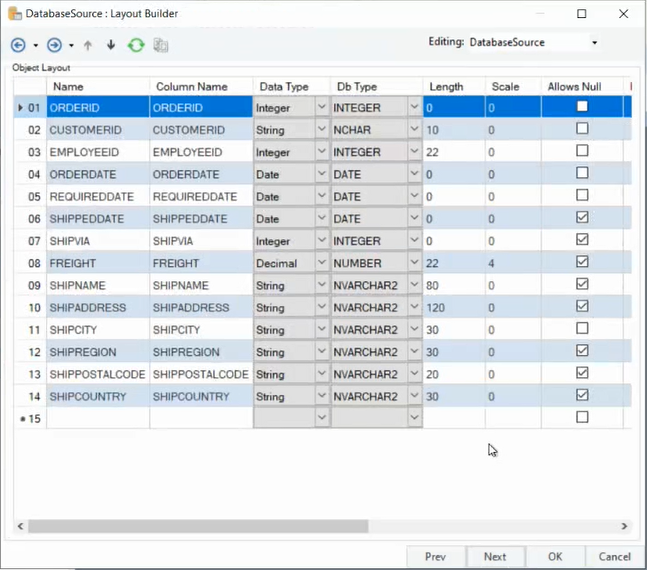
Layout Builder screen
- Now that you’ve established connectivity to your database, you’ll be able to access data from Oracle. Drag and drop Astera’s Cloud Connection object and configure it to establish connectivity to Azure Data Lake Storage. Select your desired authentication method and provide your Access Key.
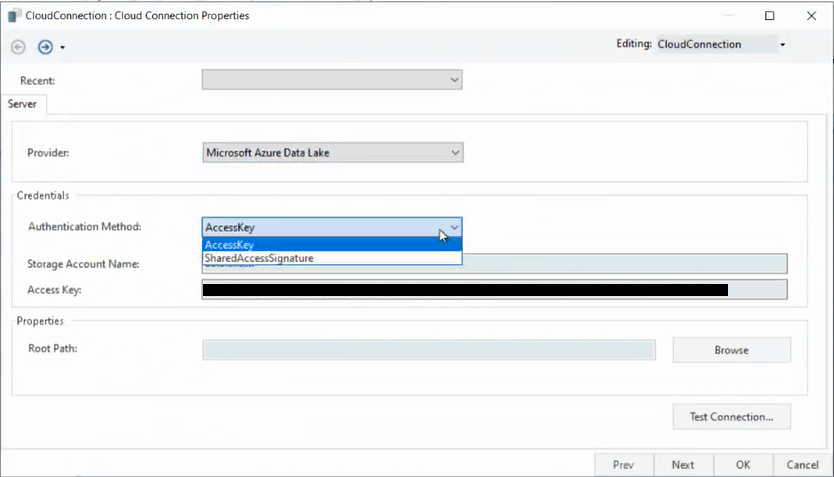
Configuring the Azure Data Lake destination object
- Use point-and-click-based data mapping to map the fields from the source to the destination, and your Oracle to Azure Data Lake pipeline is ready to migrate your data.
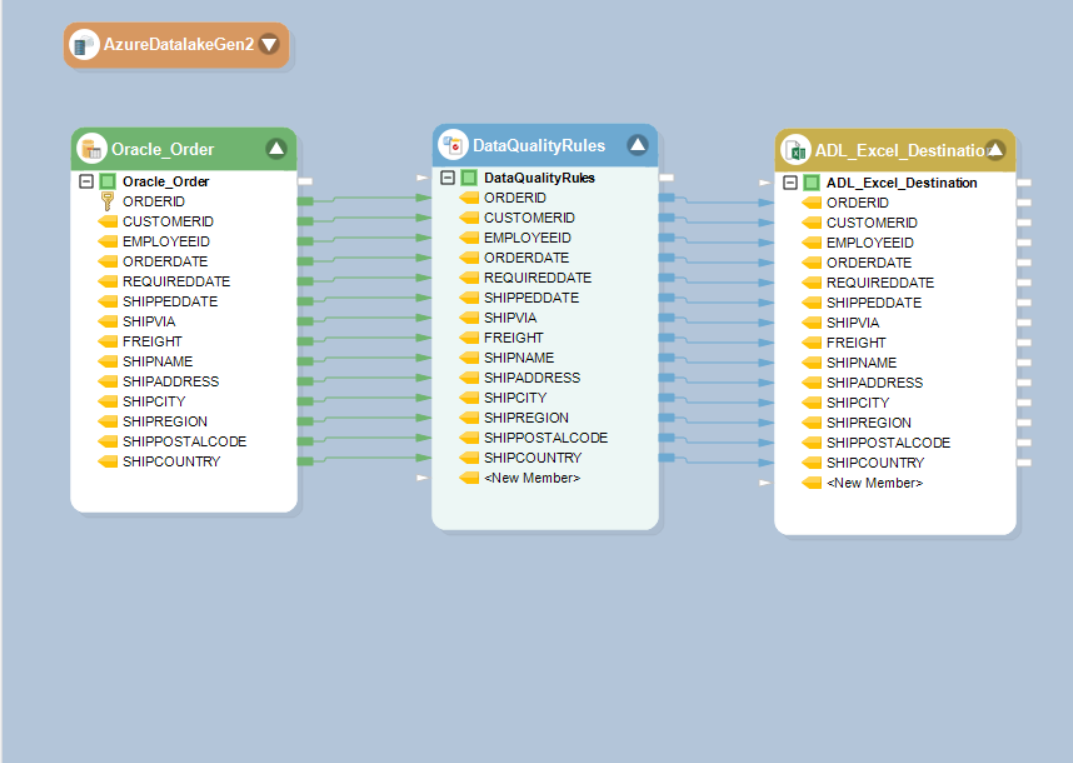
An Oracle to Azure Data Lake pipeline in Astera Centerprise
Why Astera Centerprise?
There are other ways of migrating your data from Oracle to Azure Data Lake, but you’ll need a fair amount of good luck to come across a platform that not only accelerates but also simplifies it to the extent that you no longer need to be significantly dependent on your IT department.
Whether you’re a technical or a business user, Astera Centerprise empowers you to:
- Build fully automated ETL/ELT pipelines from scratch without scripting
- Streamline data integration with automation and process orchestration
- Seamlessly connect to data sources and destinations with native connectors
- Improve data health with extensive data quality features
- Standardize data using a vast library of built-in transformations
If you want to experience superfast data migration from Oracle to Azure Data Lake with Astera Centerprise, sign up for a demo, and one of our expert data integration and migration specialists will get in touch! You can also sign up for our 14-day free trial to experience the power of Astera Centerprise firsthand.









